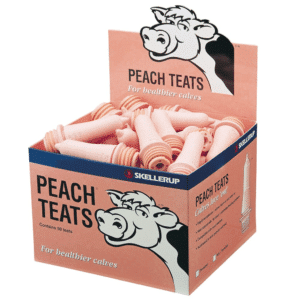Description
PhyteQuine
Why use PhyteQuine?
Short Chain Fatty Acids (SCFA) and Butyric Acid production
The main source of nutrition for the cells in the colon, University of Queensland trials show that sugarcane fibre is fermented at a more uniform rate the whole length of the colon and produces much higher proportions of butyric acid which is associated with reduced inflammation.
Proven to be safe for horses
Feeding trials
Phase 1 began with firstly feeding 4 horses 300g per day per horse split between night and day feeds over a 4 week period. No obvious issues with observed with the horses taking this amount of PhyteQuine. 2 horses where in work and 2 horses spelling.
After the 4 weeks, PhyteQuine has then being used in the evening feeds of 6 horses regularly, generally when they have come into work, whilst in work and when their hard feed was increased at 60g per feed per horse. A visual improvement in their eating patterns and general health was observed.
Efficacy of dosage for Humans in trials and in the field is 1.5g/serve twice daily a calculation of 20g/serve twice daily has been applied to Horses.
In the field
Anecdotal evidence has shown no side affects from horses being fed PhyteQuine by purchasers.
Bone Density
Silicon in soils is taken up by plants. Plants secrete organic acids at the tips of their roots. These acids dissolve oxides and other inorganic mineral salts, freeing the minerals in their ionic, pure form so that they can be absorbed. The silicon level in plants depends on species (grasses are higher than legumes) and rises when soil levels are higher. source: equisearch
The country’s leading research institution on silica supplementation in horses, the Department of Animal Science at Michigan State University, has recently published the paper “Mineral balance in horses fed two supplemental silicon sources.” While both sodium aluminium silicate (SA) and orthosilicic acid (OSA) were able to alter calcium retention and bone metabolism, only OSA was able to alter silica retention, digestibility and plasma concentration.
The bottom line: scientific studies have shown that certain types of silica are more bioavailable in the horse than others and that concerns over potential mineral imbalances are unfounded. Research in horses has proven the benefits of silica on bone growth and development while research in other species has shown that dietary deficiencies of silica can lead to deterioration of connective tissue strength and integrity.
Gray: Silica Supplementation in Horses Shown to be Safe and Effective. … Research in horses has proven the benefits of silica on bone growth and development while research in other species has shown that dietary deficiencies of silica can lead to deterioration of connective tissue strength and integrity.23 Dec 2008
Non-GMO and Pesticide Free
PhyteQuine™ is certified non-GMO and is tested in the field before and during harvest and after processing for pesticides. PhyteQuine™ Spec is including all pesticides and herbicides.
As a non-gelling product PhyteQuine™ will not interfere with other Medications or Nutrition absorption.
Note: PhyteQuine™ is a “Functional Supplement”, delivering additional and enhanced benefits over and above basic nutritional value.
“Once opened, please make sure the lid is fitted securely to keep out moisture.”
Directions for use – as a guide
Recommended rates as below per day with wet feed. 20g standard minimum for the following twice a day:
- For horses in full training and competition.
- For horses that are stabled or with diminished access to pasture.
- Weanlings and Pregnant & Lactating Mares
While we recommend 20g twice daily, our safety trials show that up to 300g daily show no ill effects.
Ingredients
To learn more about PhyteQuine or to view all products available in their range click here.









Reviews
There are no reviews yet.